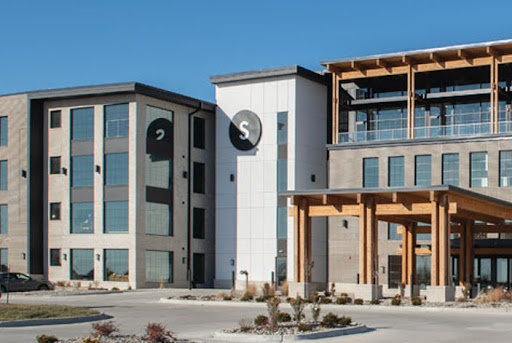Event Preview: CRE forum panelists share opportunities for 2025

Michael Crumb Apr 11, 2025 | 6:00 am
5 min read time
1,072 wordsAll Latest News, Real Estate and DevelopmentAdaptive reuse of buildings, the continued development of data centers, securing long-term leases and working to build stronger relationships between communities. Those are among the opportunities for growth in the commercial sector in 2025 identified by panelists scheduled to participate in the Business Record’s Commercial Real Estate Trends and Issues Forum on Thursday, April 24.
They will discuss projects that are underway or planned in the Greater Des Moines area, and give their insights into trends and current events that could affect the commercial real estate sector, among other topics important to commercial development in Central Iowa.
The Iowa State University Ivy College of Business Commercial Real Estate Professional of the Year will also be recognized.
The Business Record reached out to the panelists ahead of the forum to learn what opportunities they see for growth in the commercial sector in 2025.
Some of their responses have been edited for clarity and brevity.
Angie Pfannkuch
president, Sidekick Development
Adaptive reuse is an opportunity in 2025, much like it has been the last few years. With an excess of available space paired with the cost to build, new adaptive reuse continues to be worth exploring.
The city-owned buildings along the river as well as the old federal courthouse are all prime for reuse and allow for an opportunity to change the activation along the river. In addition to those buildings, the transformation of vacant office buildings to multifamily units will have a real impact on the future of downtown.
Chris Trosper
director of real estate development, Opus Development Co. LLC
The opportunities that come to mind in the real estate sector for 2025 are data centers and industrial-related impacts from onshoring.
Data centers are an obvious choice for an opportunity sector, due to artificial intelligence growth and society’s demand for technology, but this space is superheated and very difficult to penetrate. If there is a development site with significant available power, it will be in demand and sell at a premium.
The data center space is highly specialized and technical, so if you are a group with excellent technical capabilities, you will be in demand. If you don’t have these skills already, the opportunity to participate is limited.
The industrial space saw significant growth over the past several years and has pockets of vacancy today, but the long-term trends are still positive. Factors like continued growth of online retail (compared with brick and mortar) and political policies provide tailwinds for industrial projects to be local and close to the customer base.
There isn’t a magic strategy to participate in these types of opportunities. I believe this is more about execution and providing confidence to a customer that you can perform. A customer’s decision-making is hard enough evaluating interest rates, tariffs and other exogenous factors. If an end-user decides to move forward with a project, they will want a partner that they have a high degree of confidence in their deliverability. The opportunity is created by having a history of reliability. That isn’t created overnight.
Mike Derkenne
co-owner, Beal Derkenne Construction
I believe there will be and should be more opportunities to construct mid- to high-rise structures in downtown Des Moines and that the 515 Walnut Tower should not be a once-in-a-generation-type project as has been referenced.
We have worked on repurposing existing buildings into new residential developments and have the data to show that it can be more cost-effective to build a new high-rise than to renovate an existing old, outdated structure. The strategy to complete this is to educate investors and developers that there is a cost-effective solution.
Cody Christensen
director of development services, city of Des Moines
The upcoming availability of three historic civic structures — the Armory Building, City Hall and the U.S. Courthouse — presents a compelling opportunity for transformative redevelopment along Des Moines’ riverfront. This area is rapidly evolving into a premier recreational and cultural destination, enhanced by an extensive network of parks, trails, bridges and major initiatives like the Two Rivers Park and ICON Water Trails projects.
The redevelopment of these historically significant properties offers the potential to introduce a dynamic mix of uses that complement the area’s growing appeal. However, unlocking their full potential will require a strategic approach — balancing adaptive reuse with thoughtful design and securing a tailored financing structure that leverages historic tax credits, public-private partnerships and other creative capital solutions. Developers who successfully integrate these elements will not only contribute to the vibrancy of Des Moines’ downtown waterfront but also position themselves at the forefront of a unique, high-impact investment opportunity.
Matt Weller
vice president of development, Hubbell Realty Co.
There’s an opportunity to lean into relationships with cities to better understand what they are looking for in their communities, and partner with them to deliver on that need. In an environment where there are multiple headwinds to a multifamily development, any assistance we can get to contribute to a project’s capital stack is extremely helpful.
Christopher Stafford
director and senior vice president, Cushman & Wakefield
As we progress through 2025, the commercial real estate market presents a mix of challenges and opportunities across various sectors. One notable opportunity for businesses is securing long-term leases at favorable rates for high-quality properties. With limited new construction in recent years, combined with rising interest rates, higher construction costs and ongoing economic uncertainty, rental rates are expected to remain stable or increase. This creates an advantageous scenario for tenants to lock in current lease rates for the long term. This opportunity spans the retail, office and industrial sectors, with particular potential in underperforming properties that may offer more competitive lease terms to attract tenants. Properties with unique value propositions or repositioning potential could also become increasingly appealing.
To capitalize on this opportunity, tenants should begin planning at least 12 months before their lease expires. Advanced preparation allows for a thorough market evaluation and sufficient time to negotiate favorable lease terms. Consulting with an industry expert can help identify strategically located properties that align with the tenant’s business needs and long-term goals. Long-term leases not only provide tenants with potential cost savings but also benefit property owners with greater stability. Lenders tend to favor assets with high-quality, long-term tenants.
By taking a proactive, forward-thinking approach, both tenants and property owners can achieve mutually beneficial outcomes in this evolving market.
Register for the CRE Forum on April 24 at www.businessrecord.com/events.

Michael Crumb
Michael Crumb is a senior staff writer at Business Record. He covers real estate and development and transportation.










